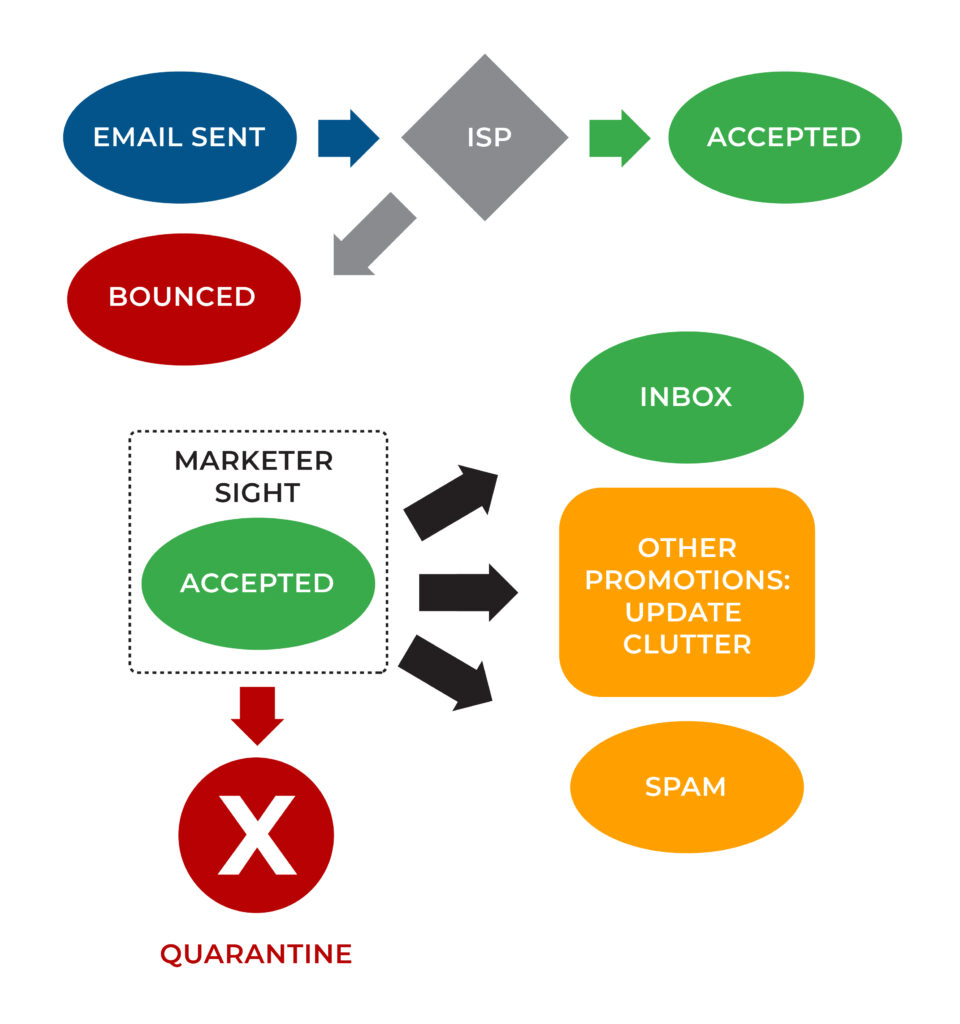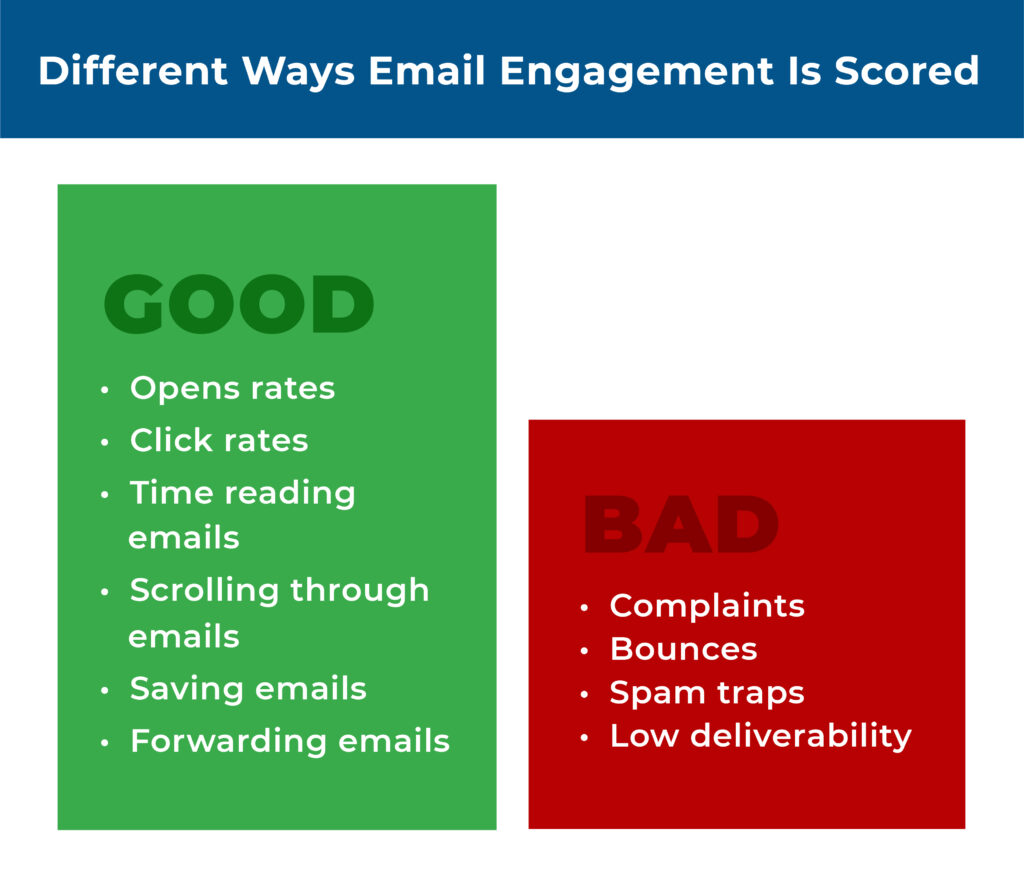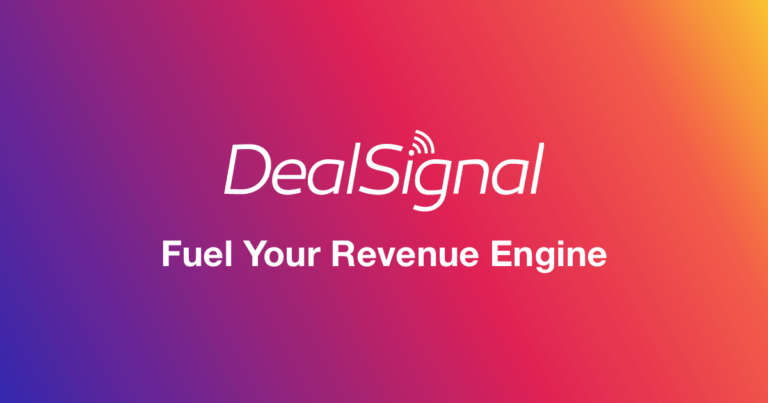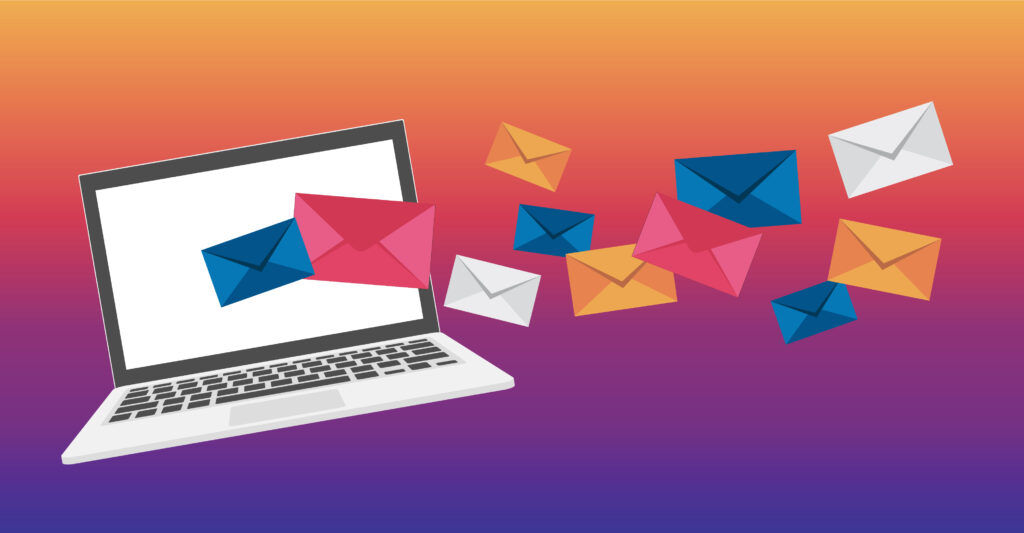How Does Email Engagement Impact Email Deliverability?
As you’ve learned, email deliverability is important but did you know that email engagement is just as critical? Along with the other factors discussed in our previous article, email engagement can affect your email deliverability. The good news is that all the initiatives you take to improve email engagement will improve deliverability and your conversion success with email.
Internet Service Providers (ISPs) and inbox providers want to deliver the messages their users want in their inbox and block messages they don’t want. To do this, the inbox providers measure how their users interact with your email – i.e., your email engagement. This measurement of how engaged your subscribers are is a major factor in the sender reputation score the inbox provider keeps on you.
So focusing on email engagement helps you get into the inbox and also helps with other email performance statistics like your deliverability score. But, what is email engagement?
What is Email Engagement?
But what even is Email Engagement and why does it matter? In essence, email engagement is the principle of measuring how contacts in your mailing list interact with your email campaigns. It’s essential to both sales professionals and email marketers to carve out a superior strategy to make your email campaigns more engaging to recipients. After all, higher user engagement can turn into more sales for your organization.
You can track email engagement through four core metrics: email open rates, reply rates, click-through rates, and conversion rates.

How Do ISPs and Inbox Providers Use Engagement To Measure You?
Trends are constantly changing, and ISPs and inbox providers have access to a lot of data. That’s why optimizing email deliverability by monitoring engagement rates is essential. Email engagement is a standard reputation score that every inbox provider maintains on their own and doesn’t share. Internet Service Providers (ISPs) and inbox providers look at many factors to assess the trustworthiness of your emails.
Essentially, if you’ve got a history of low email engagement, your future emails are more likely to end up in the spam folder, reducing your deliverability. Reduced deliverability means fewer recipients can engage with your emails, causing damage to your email deliverability and engagement scores.
In many ways, your “sender reputation score” is your “email engagement score”.
ISPs and inbox providers score you based on many factors, but the following factors impact your email deliverability the most.
How Are Sender Reputation Scores Determined?
Google, Microsoft, and other modern inbox providers are looking to deliver messages to the inbox that their users actually want. They make this decision by scoring the user’s engagement on every email they receive from a specific mailer and then attach a sender reputation score to that mailer.
Proper inbox placement is a key concern for users. Google, Microsoft, and other modern inbox providers apply their full tech stack capabilities when making delivery decisions. Today, sender reputation scores are calculated from sophisticated Machine Learning (ML) models. The ML models are kept secret and are competitive weapons used by inbox providers to compete against each other.
Sender Reputation – Positive Inputs
- Open Rates: Recipients opening emails showcases interest.
- Replies: Recipients actively engage. Including a non-generic “Reply-To” address is essential.
- Forwarding: Forwarding email signals to the user is positively engaging.
- Marking “Not Spam”: Marking emails placed into the Spam folder as “Not Spam” signals user wants to receive these emails.
- Saving & moving between folders: Placing emails in folders indicates to ISPs how users want to treat emails by specific senders.
- Whitelisting: Adding senders to address books improves email engagement by telling inbox providers a user wants to receive their emails.
- Time spent reading & viewing: The longer users spend on your messages, the more engaged they appear to be.
- Printing emails: Printing emails signals email engagement by users.
Sender Reputation – Negative Inputs
- Moving emails to Spam/Junk: This one speaks for itself. If a recipient is moving emails to Spam, they signal that they do not wish to receive future emails from a sender.
- Deleting emails: If the recipient deletes an email without reading it, this makes a bad impression on mail filters and hurts your overall deliverability.

How Do I Know My Sender Reputation Score?
Inbox providers do not share the reputation scores they keep on senders. Inbox providers depend on proper spam filtering to guard their sender reputation scores closely. There are multiple indicators that senders can use to gauge their sending reputations.
But, given that a mailer cannot see their score, what indicators can they look for?
Postmaster Sites
Google, Microsoft, and Yahoo offer postmaster sites where senders can look up information on their reputations. While these sites won’t tell senders their scores, they will point out problems negatively impacting scores.
Google: https://www.gmail.com/postmaster/
Microsoft: https://sendersupport.olc.protection.outlook.com/snds/
Yahoo: https://senders.yahooinc.com/contact/
Seed List Test
Seed list testing sends an email to a specific list before you send the email out to all the contacts in your database. Major inbox providers test inbox placement to diagnose advanced warning deliverability issues.
Engagement Baselines
Every sender concerned about deliverability should establish baselines of the metrics they can view and track. Clicks are one of the best metrics for baselines. Knowing where click levers should be with any send, a sender can watch for sudden drops in clicks that indicate a deliverability issue.
Baselines are a must since they use the metrics the sender can directly track. Email engagement metrics allow you to track activity that inbox providers use to build your sender reputation score.
It’s All About The Data
If you’re landing in the inbox, your email deliverability score is good, you have high engagement, and you’ve now achieved the main goal: getting in front of your contact. But, landing in the inbox is just the beginning.
Data is the foundation of email deliverability because it helps you maintain a strong email reputation and tracks your email engagement. You can ensure high engagement and consistent deliverability by managing and updating your email contacts throughout the year.
Improve Email Engagement With a Partner You Can Trust
If you aren’t certain of the authenticity of the contacts in your database, DealSignal can help you verify and validate that the email addresses you have are both real and active.

Manually cleaning your email contact lists can be a very tedious process, but using verification services can greatly reduce the number of invalid email addresses in your database.
Get started with DealSignal today and learn why clean data matters to email deliverability and engagement.
Learn more about Email Engagement and Deliverability
- From Cold to Sold: 10 Powerful Email Marketing B2B Lead Generation Strategies
- What is Email Deliverability and Why It Matters to B2B Marketers and Sales Teams?
- How To Improve Email Deliverability
- How B2B Data Quality Impacts Email Deliverability
- B2B Email Marketing: Best Practices and Essential Tips for 2024
- B2B Marketing Trends to Master In 2024




